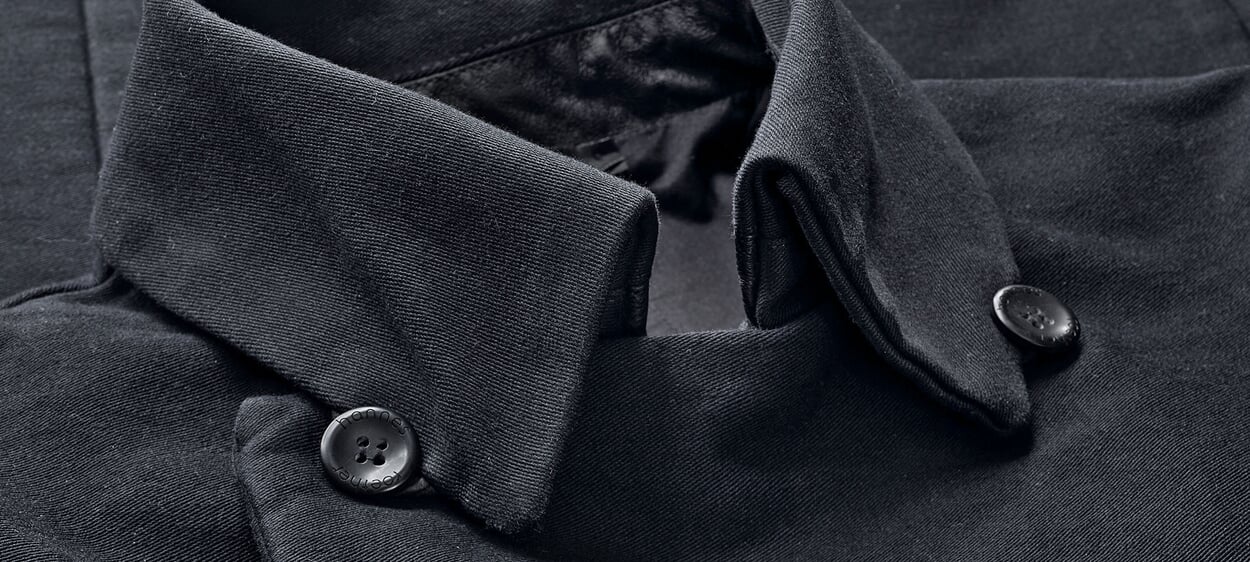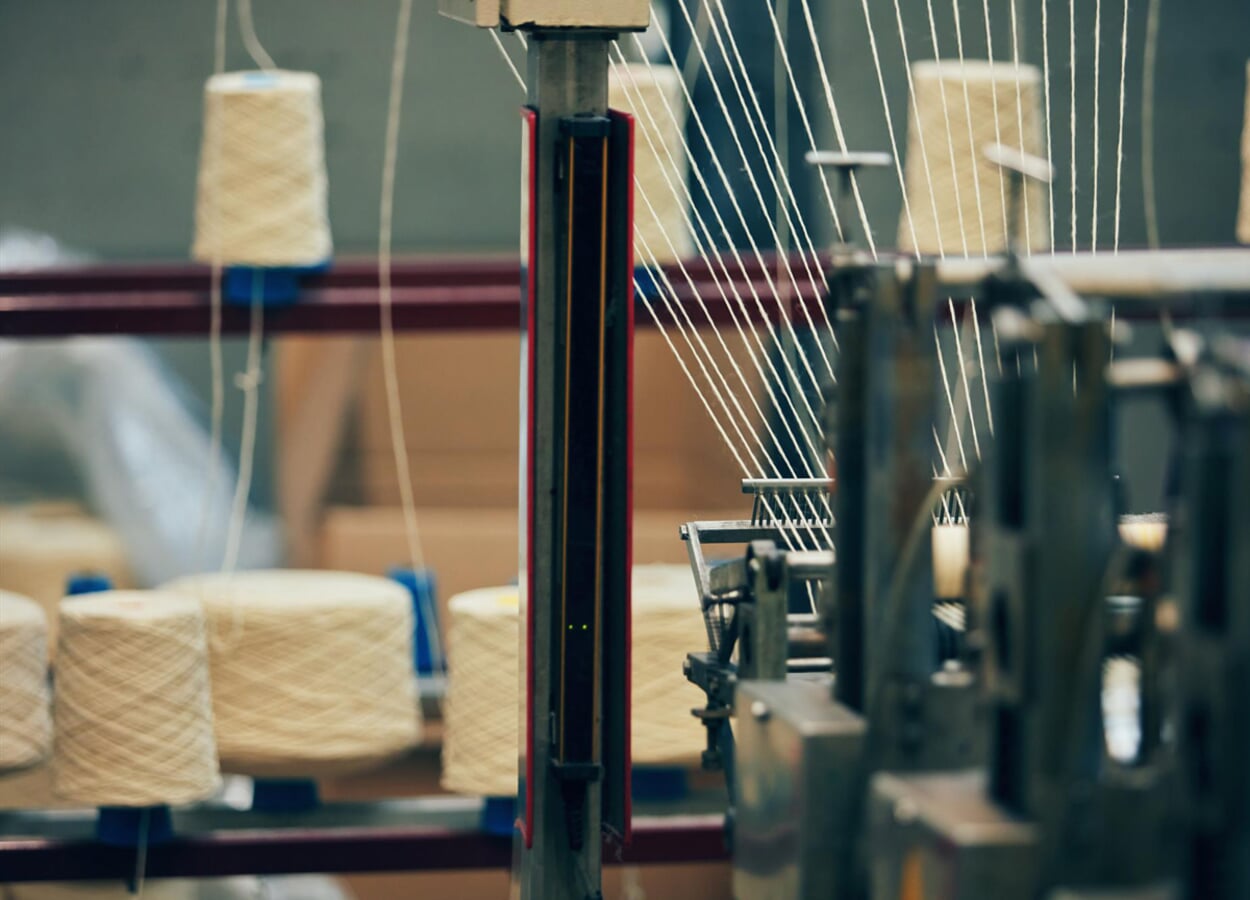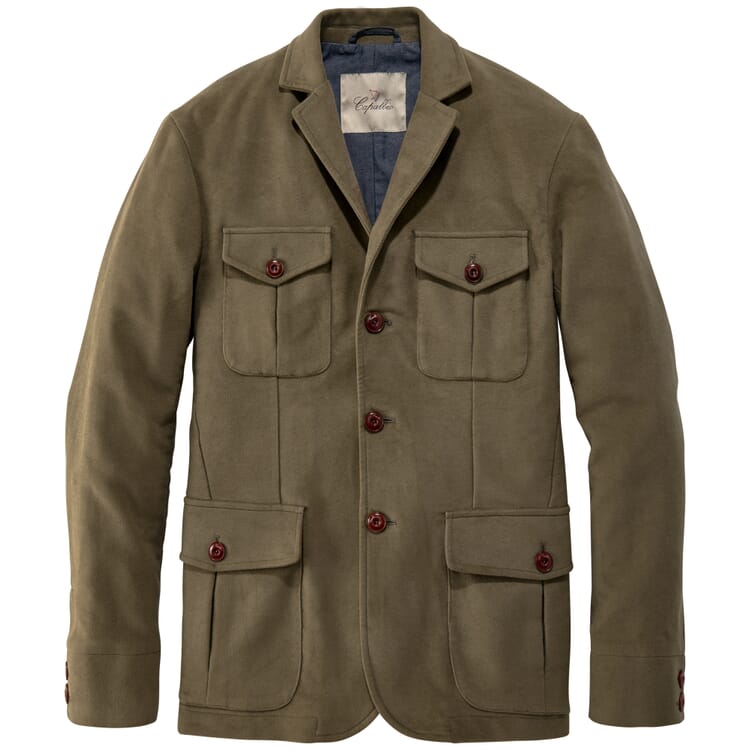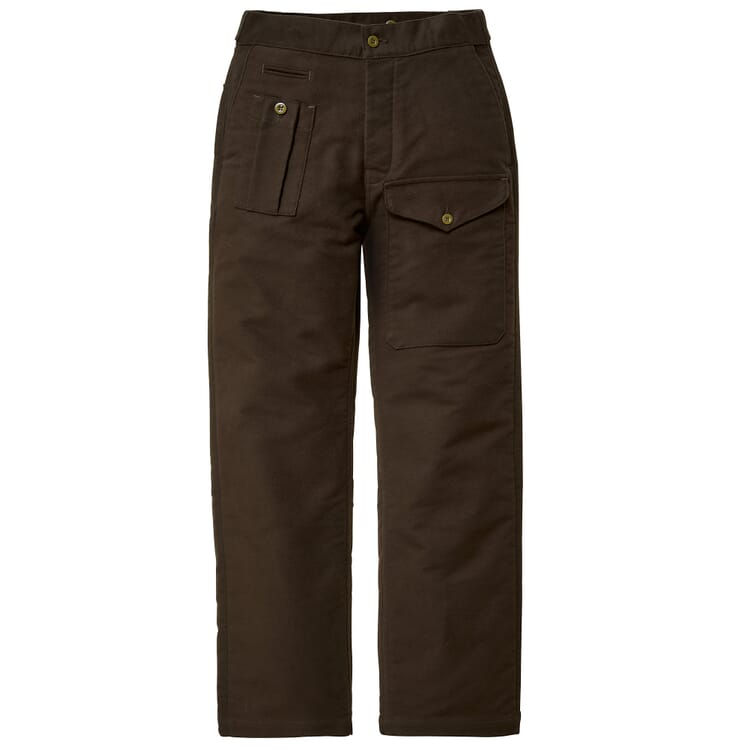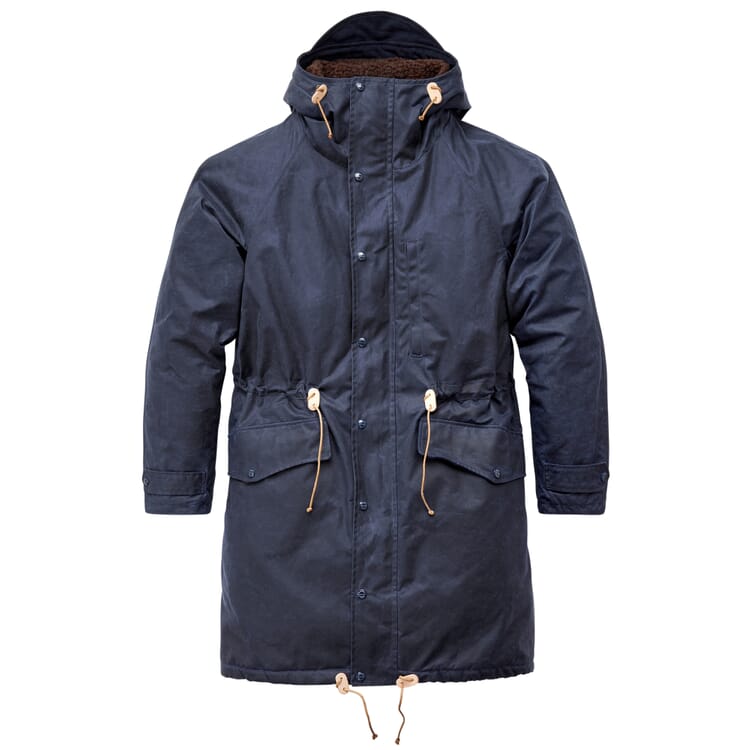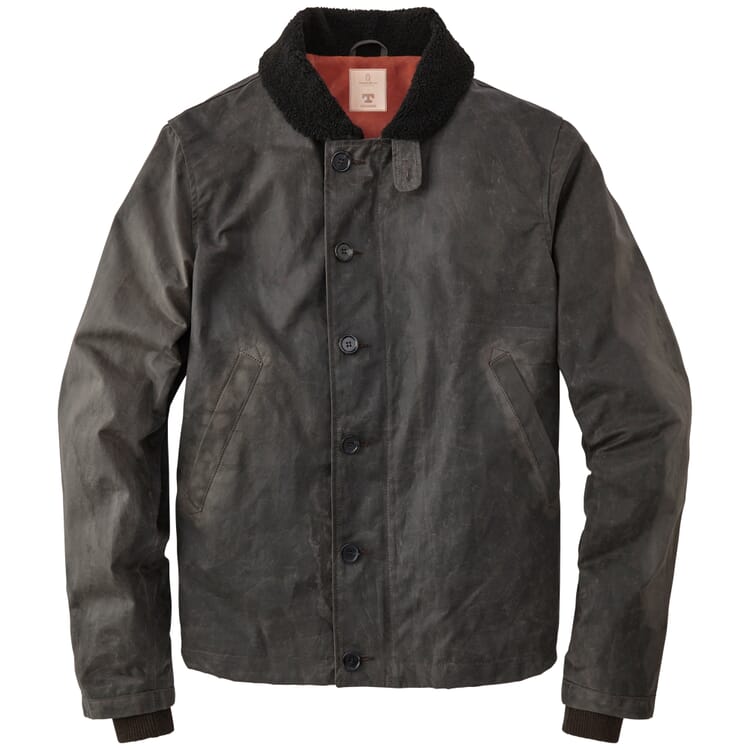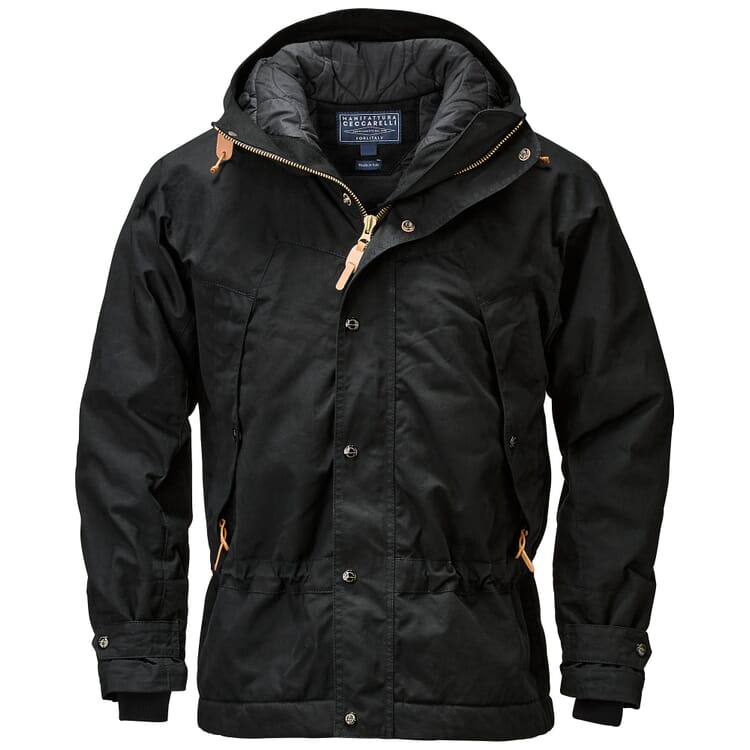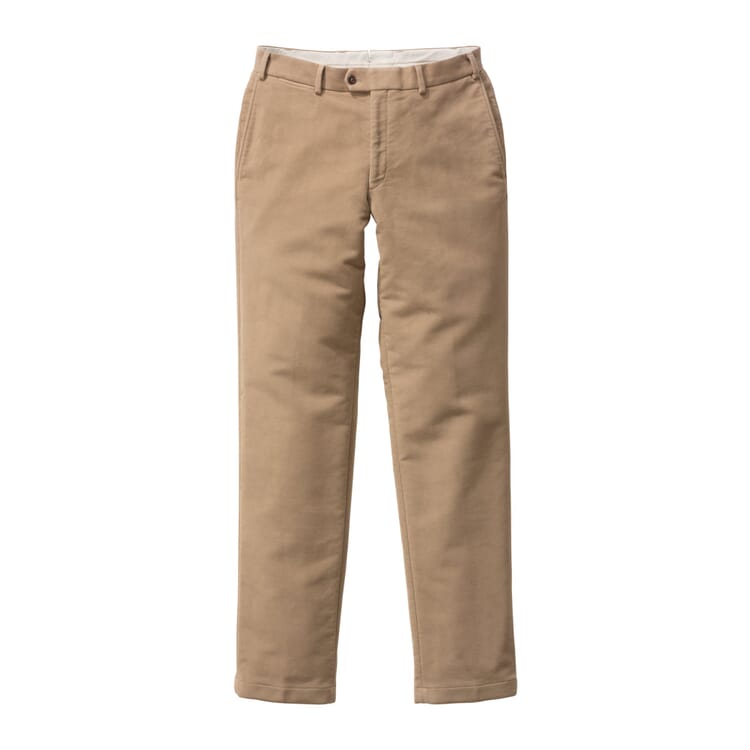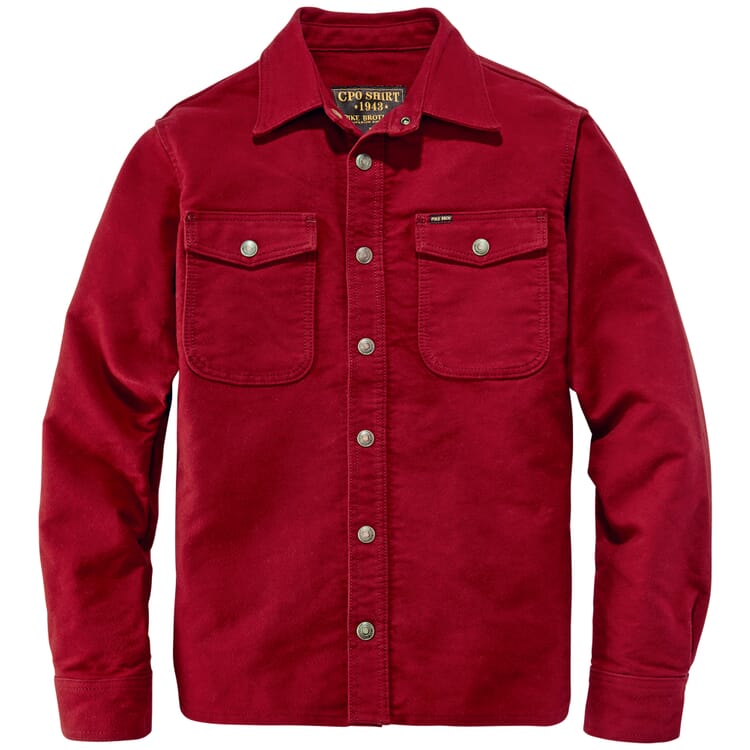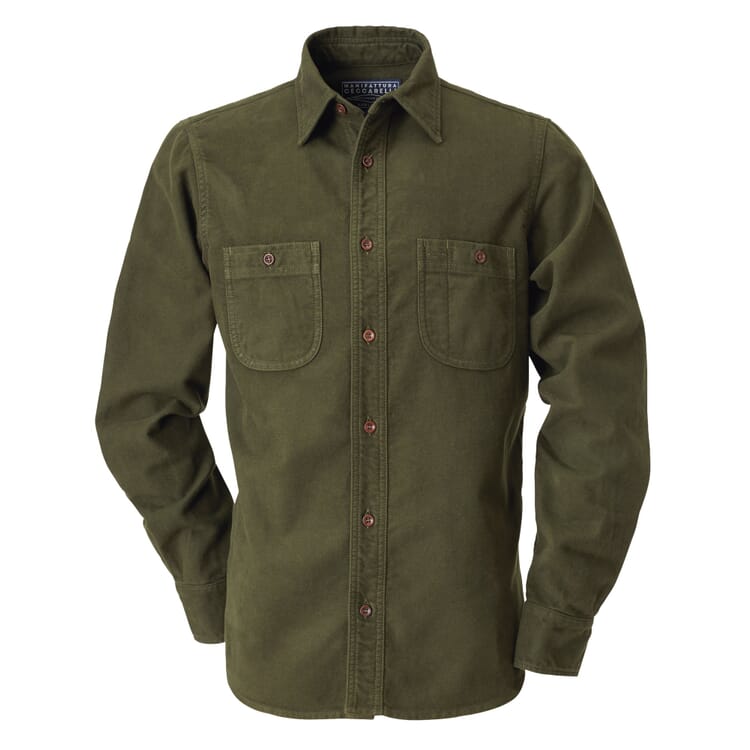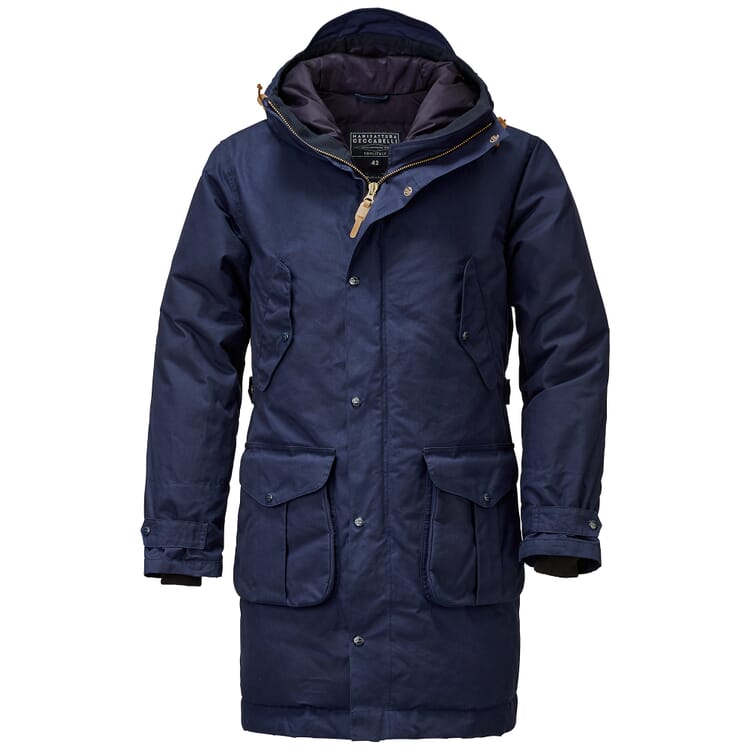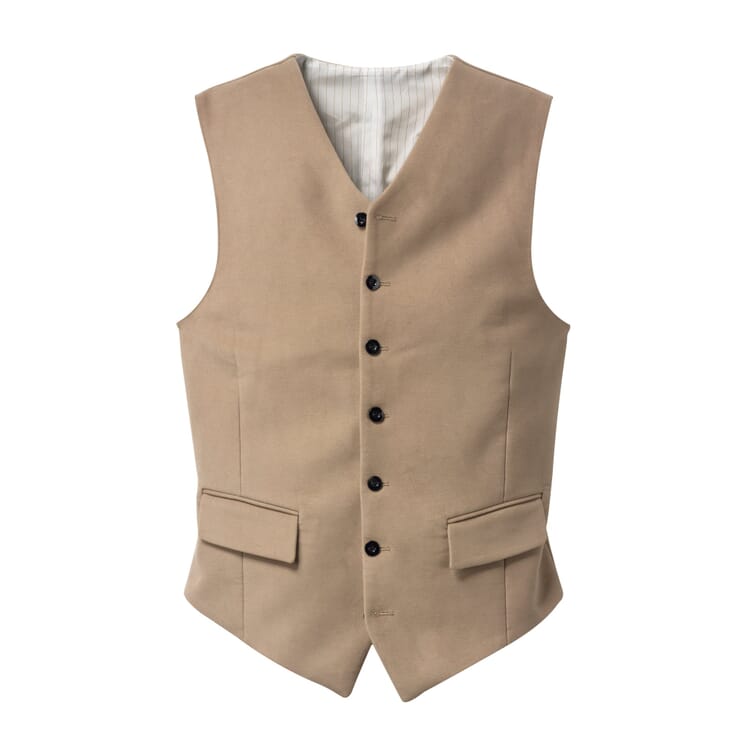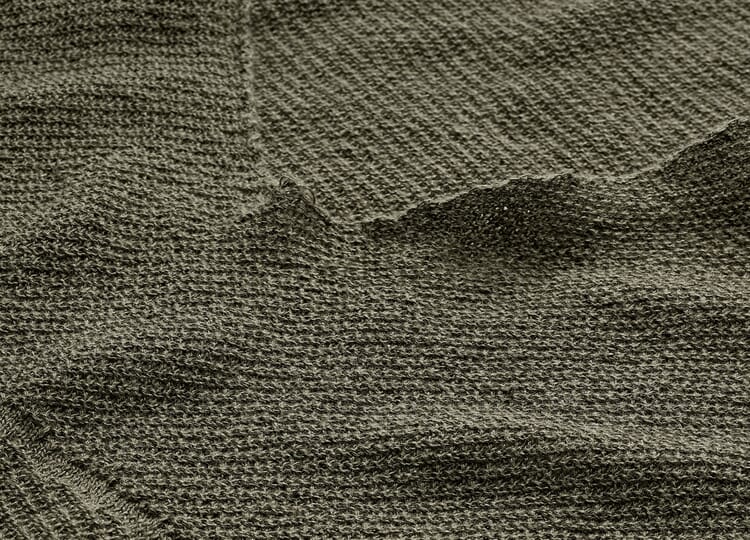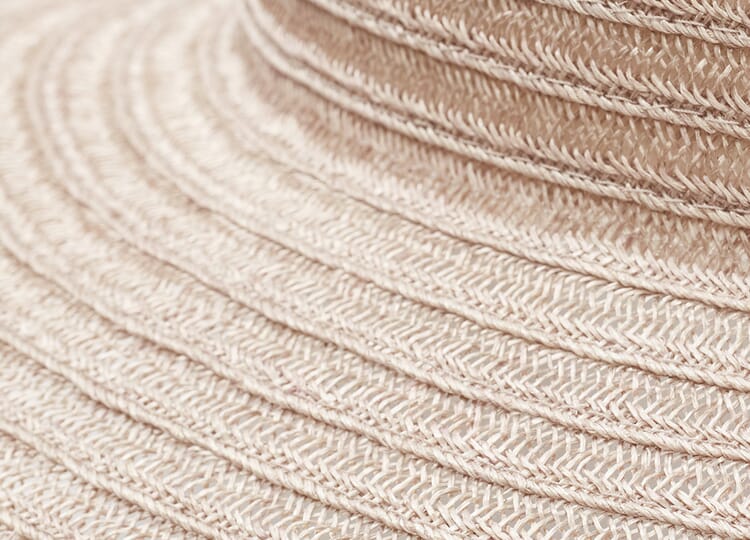Material
Moleskin. Soft and robust at the same time
Moleskin literally translates as Maulthrowskin. And especially in its black form, the fabric looks just as you would imagine it to look: silky-soft and cuddly. Even traditional British weavers can only speculate as to whether this is where the name actually comes from, but the fact is that the heyday of moleskin dates back to the second half of the 19th century and the beginning of the 20th century - a period which, not coincidentally, was also defined by the rapid increase in industrialization. At that time, the characteristic fabric was primarily a material for work clothes. Woven with strong and firm, mostly twisted warp yarns and a high density of soft, twisted weft yarns (up to 400 threads per inch), moleskin, usually made of pure cotton, was entirely geared to durability and hard-wearing.
By emerizing and napping the finished cloth, it also became inimitably soft and grippy, which at the same time made it very comfortable to wear. Although moleskin fabrics can also be chemically finished, we deliberately refrain from doing so for high-quality versions such as those in our range, because the fabric already has all the desired properties: its characteristic look and feel, the advantage of being easy to wear and, last but not least, its durability. Accordingly, the weave specifications of the best moleskins have remained virtually unchanged for many decades, so it's no wonder that moleskin has remained popular to this day (long since even away from its working-class origins). Its heavier qualities - from a basis weight of 400 gsm - are used today mainly for pants, vests, jackets and the like. The lighter variants are used for shirts - moleskin is also popular for jackets as a robust collar or cuff trim.
Selected products from Moleskin
Recommended Topics
By nature, cotton feels pleasantly soft on the skin, and it also has a low allergy potential. Due to these extremely skin-friendly properties, cotton has been one of the most popular natural fibers for the production of textiles for thousands of years. From home textiles such as towels, comforter covers and blankets to clothing, many of our products - especially those that come into direct contact with the skin - are made of pure cotton.
View moreFlax is one of the oldest textile fibers in the world. Processed into high-quality linen, the fiber proves its valuable wearing properties. For example, linen feels pleasantly cool on the skin, especially in the summer months. The fiber owes this cooling effect in particular to its outstanding moisture-regulating capabilities, but it also offers many other advantages.
View moreHemp is one of the oldest useful and cultivated plants in the world and is very versatile. Long displaced by cotton, hemp fiber is now celebrating a comeback. The textile industry is once again turning its attention to the use of hemp fibers. This is a welcome development, because hemp has an excellent ecological balance sheet.
View more
